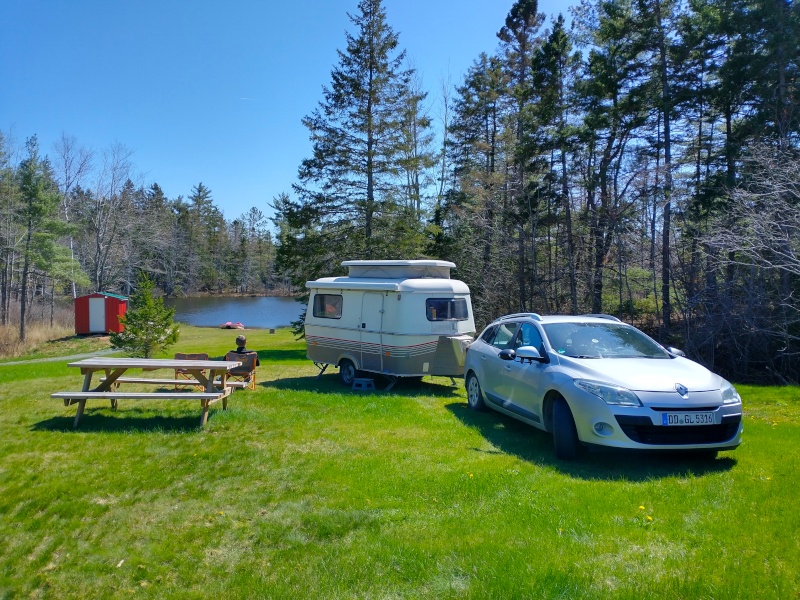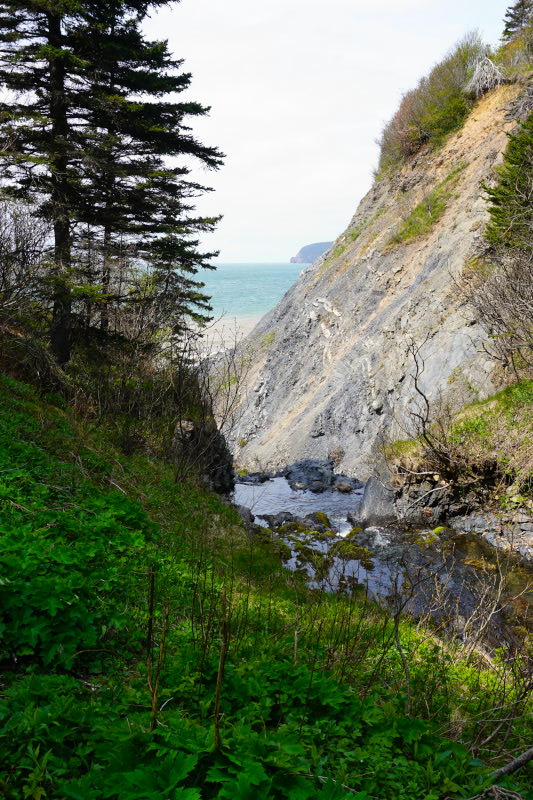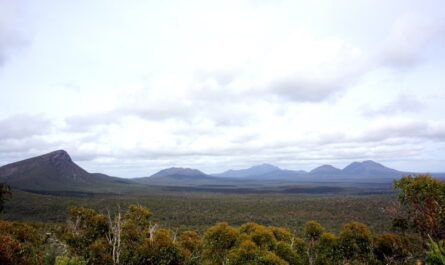26/04 – 27/05/2023
The evening we left for Canada, our little home had already arrived. It had made the journey across the Atlantic two weeks earlier by ship and was already waiting for us 😉 Only one day after landing in Halifax, we were able to pick up our caravan again in the harbour and look for a camping site nearby.



Shortly afterwards, we paid a “detailed” visit to the capital of Nova Scotia. Peggy’s Cove Lighthouse, probably the most famous lighthouse in Canada, was on the way. Arriving in Halifax, we first got an overview from the walls of the citadel. The strategically important location of the city quickly became clear. It is located at the entrance to the world’s second largest ice-free natural harbour. No wonder that the Canadian Navy still has its main base here today. After a stroll through the historic centre of the city, we visited the Maritime Museum of the Atlantic. Besides many interesting exhibits, we were particularly impressed by the stories and short films about the rescue of the victims of the Titanic sinking (1912) and a tragic ship accident in Halifax harbour (1917).













The next starting point for our explorations of nature & history was on the Bay of Fundy, near the town of Digby. On the way, we stopped briefly in Mahone Bay and Lunenburg, two typical fishing villages of the region.


The following day, it was finally time for some hiking. The nearby Kejimkujik National Park offered us several hiking routes and we completed a total of about 15 km. A special feature of the park are the hemlocks, which are several hundred years old. The oldest is even over 400 years old.




From the headland of Digby Neck, ferries took us to two offshore islands. On Long Island, we could safely descend the basalt cliff and take a look at Balancing Rock. The second island was Brier Island. Apart from really strong sea winds, it had a lighthouse on the rough and lonely Atlantic coast.





In Annapolis Royal we visited the Fort Anne National Historic Site, an 18th century English fort. Walking through the village, we looked at many historic houses, including the De Gannes-Cosby House. With an age of 315 years, it is the oldest wooden house in Canada. After a short drive on, we were then able to see another (reconstructed) fort from 1605 in Port Royal. This was the first permanent settlement of the French in Canada.








We moved on and spent the first night at an idyllic campsite in Shubenacadie. From here we were supposed to continue the next day, but heading north at that time (it was May 6) there was absolutely no campground open. So we turned around and made this great place our one-week “long-term campsite”. Fortunately, this day of cruising was not completely wasted, because we were able to watch one of the biggest tidal waves in the world in Truro. When the tide is high in the Bay of Fundy, a wave pushes upstream along the Salmon River.







Then we could finally move on. Cape Breton Island, or “the lobster’s claws” (the shape of Nova Scotia is very reminiscent of one) was now our destination. The 300 km long Cabot Trail runs around the northern tip of the island, a route along the coast and through the Highlands that is very diverse in terms of landscape and above all weather. We completed this loop in one day and experienced almost the entire range of weather. Where else do you ride in mid-May, at an altitude of only 400 metres, in snowfall through what feels like endless forest?












The following two days we hiked in Cape Breton National Park and on the (much more beautiful) Cape Smokey Trail in the Provincial Park of the same name.












Before we left the island behind, we visited the Fortress of Louisbourg National Historic Site. The 18th-century French fortress has been rebuilt to about 1/4 of its original size and was an important site in the history of the creation of Canada as we know it today.
















The last stop in Nova Scotia was Parrsboro. In its surroundings we covered a few beautiful stretches on foot. But the most interesting was the morning visit to the Joggins Fossil Cliffs. Not even 5 minutes passed and we had already discovered fossils on the beach. At our overnight campsite, we also met a very nice Canadian woman who was spending her very first camping night in a converted van and whom we were able to help with a few tips and advice.






















Next we went to the province of New Brunswick and the Fundy National Park. Here we enjoyed the views of the Bay of Fundy, a red squirrel “presenting itself” to us and Dickson Falls.









On a walk through the quite pretty provincial capital of Fredericton, one of the things we looked at were the Victorian buildings & houses and Christ Church Cathedral, built in the Gothic style.








And we also paid a short visit to Canada’s oldest city, Saint John.









Already we were drawn further north. Hartland gave us a very good reason to stop and stretch our legs on these long distances in this huge country. The covered bridge here measures exactly 390.75 metres, making it the longest in the world.



That’s it for now from us and the other side of the “big pond”. See you soon.










